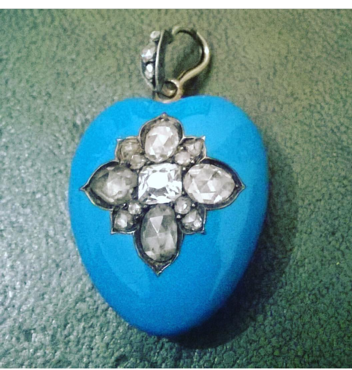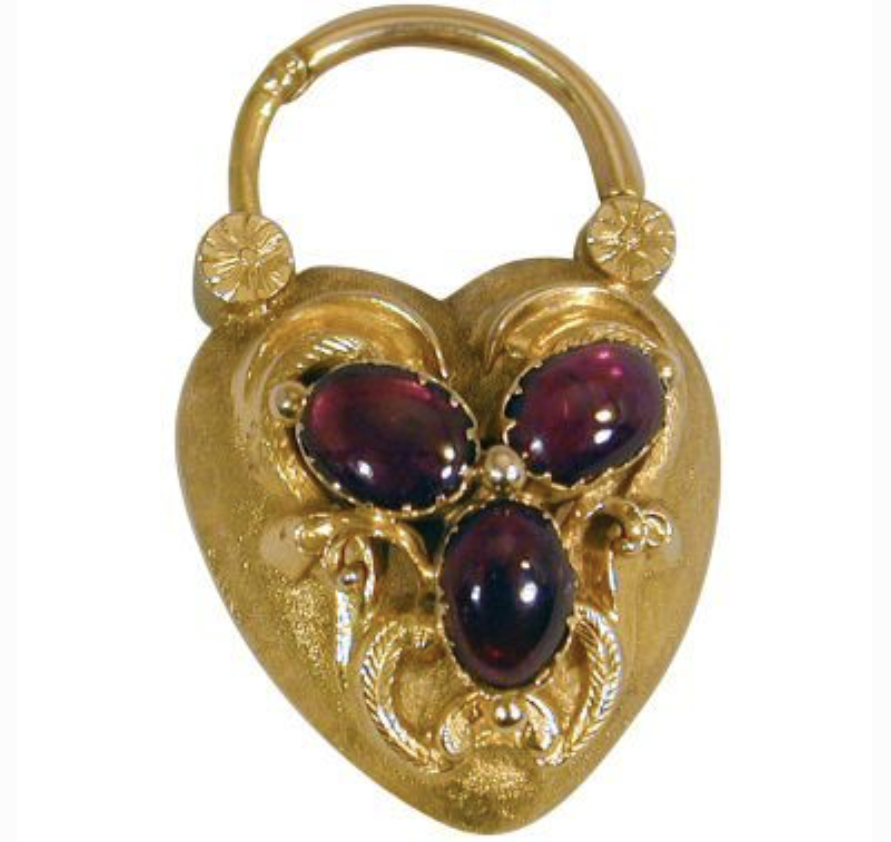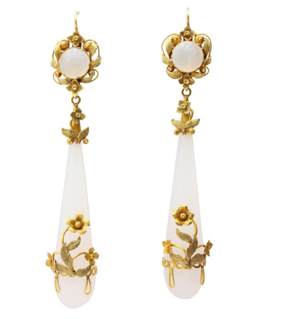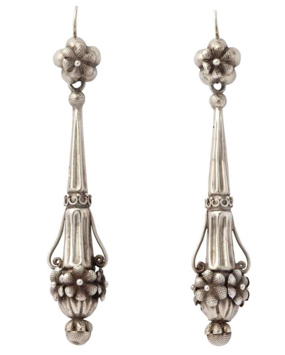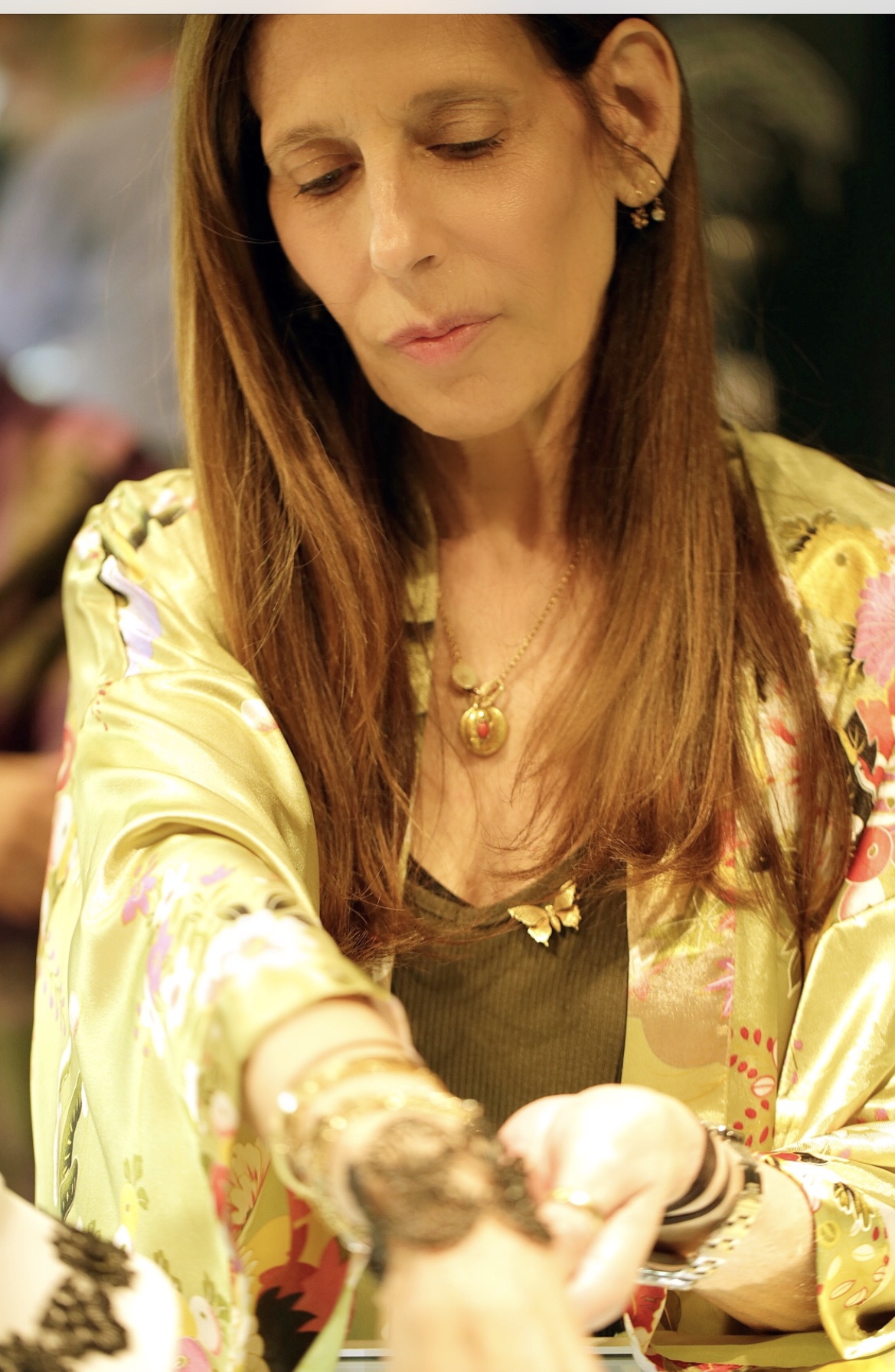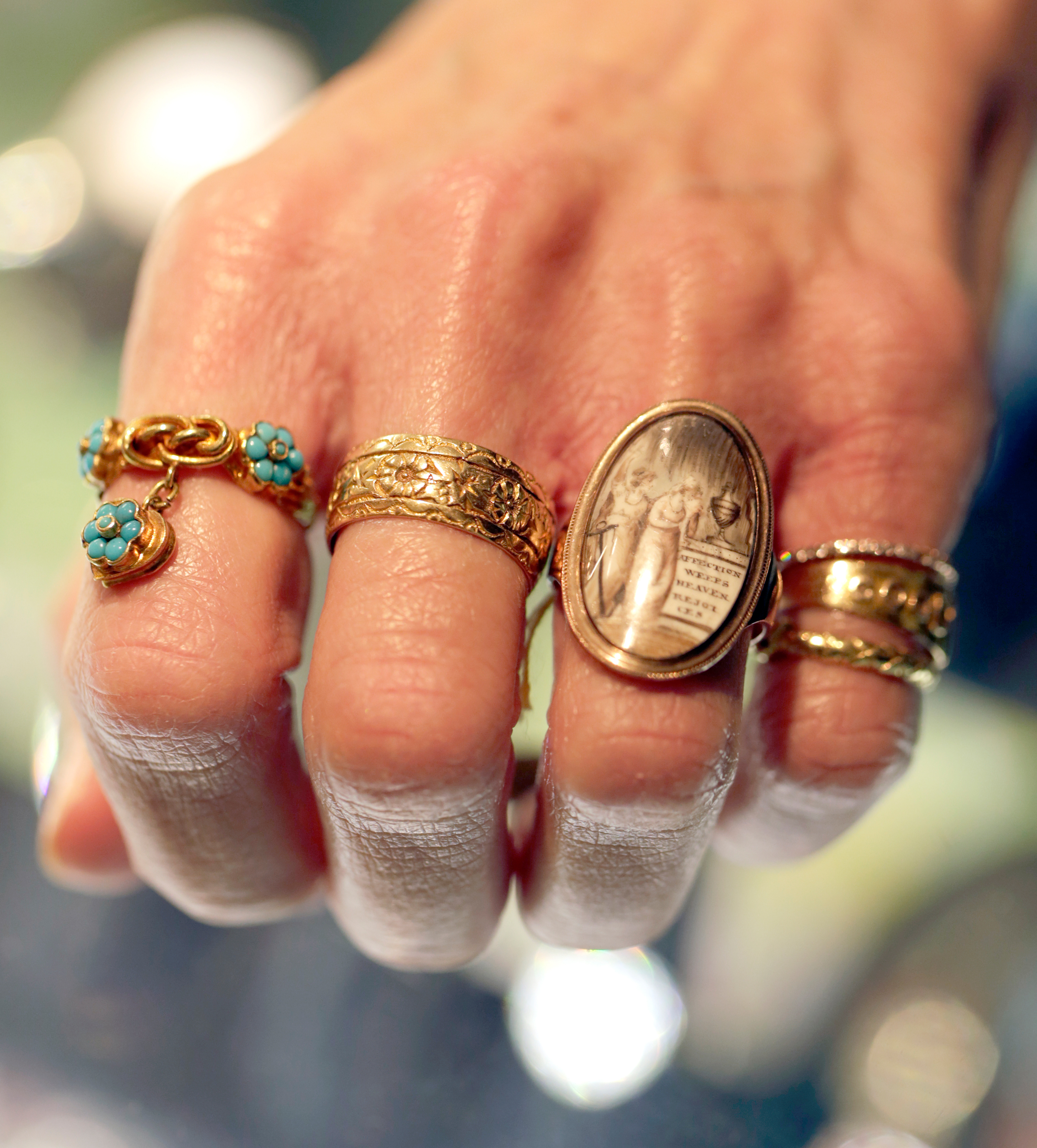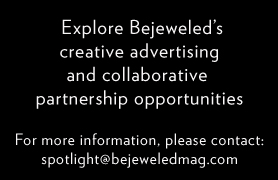My Guided Tour and Hunt For Jewelry from Different Centuries
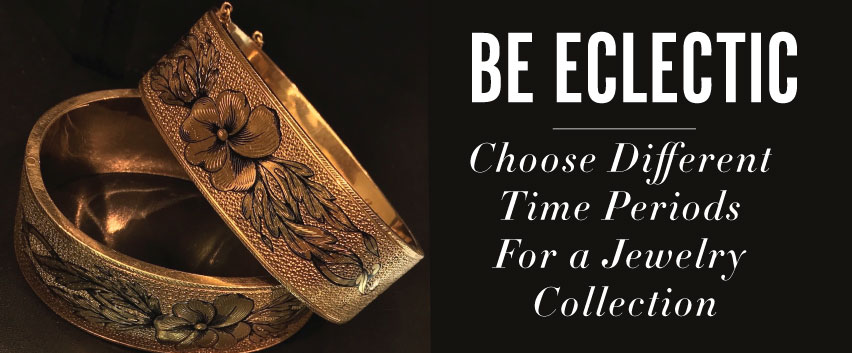
Shopping an antique jewelry show can take you throughout many time periods and provenances. It can make you feel sentimental. It can lead to you want to know more about the lives and loves of people who owned certain pieces that catch your eye and touch your soul. If you are a new antique/vintage jewelry enthusiast, It can also be confusing when it comes to which time period you favor. You might also question if you are paying a price that’s in keeping with the age and provenance and condition of the piece.
There is always something new you can learn and help you to have more of a connoisseur’s eye whether you are novice or more consummate collector. At The New York Antique Watch and Jewelry Show, and other U.S. Antique Shows produced events, I guide tours through the different centuries and introduce my groups to expert dealers who specialize in the many periods from Georgian through Vintage ’70s. Every time I take a new group through a show, I too discover something I haven’t heard or seen before (read here). And, for me, it’s exhilarating.

That is exactly the way I felt at the recent New York Antique Jewelry and Watch Show, which took place from July 27-29th. In addition to finding enchanting jewels and uncovering new historical facts at the dealer’s booths, I also learned a lot from ny two tour groups, from the questions they asked and from hearing about their varied tastes and why they had decided to take the tour.
I learned that many preferred earlier periods: Georgian, Victorian, Edwardian and Art Deco rather than retro, mid-century or vintage ‘70s, even though mid-century through vintage 70’s is having a big moment right now, particularly the signed pieces.
The info I gathered and the jewelry I saw inspired me to write about building a collectible wardrobe of pieces from many of the earlier time periods that would feel and look modern and relevant with current fashion. I have chosen pieces that range from accessibly priced to the more rare higher ticket items.
If you are a starter collector or a jewelry enthusiast and prefer the charm, character and one-of-a-kind nature of antique and vintage pieces, then I recommend trying out different eras to see which one fits your personality and your lifestyle best. If you find that you have eclectic taste and become as taken by the hand made beauty of Georgian closed foil backed flat garnet jewelry as much as you love Edwardian/Belle Epoque lacy and ultra-feminine flourishes in platinum, diamonds and pearls or the Geometric lines and different gemstone cuts of the Art Deco period, then you can purchase pieces from each of the periods that make your heart skip a beat. If they are in good condition and are authentic, they will retain their value or appreciate with time. And who ever said you can’t mix centuries-in stacking and layering, charms metals and gemstones and also in bold statement pieces. It actually looks more modern when you do.
Here are some pieces to consider, which I found at the recent show:
RINGS
-Try a vibrantly colored Georgian ring with a diamond surround in silver topped gold and a closed foil back setting. But remember this ring cannot get wet, so take it off when you wash your hands. If you don’t, the foil will start to ruin, which will cause the color of the gemstone and the life of the diamonds to fade and yellow..
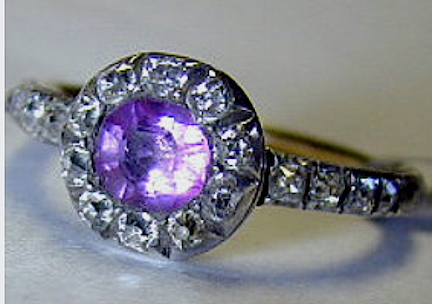
Georgian ring at The Spare Room Antiques
-Be on the lookout for Signet Rings, which have made one of the biggest comebacks. Celebrities are wearing them, designers are re-interpreting them and antique shops and dealers are selling out of them. In an age of personalization, these rings literally offer the wearer an individualized stamp of style—one that can be as simple as monogrammed initials or more intricate, depicting mottos, messages and motifs. “Signus” means sign in Latin, and the rings were, in fact, used as a form of signature—the image of the ring in relief, when impressed on wax, sealed deals, identified ownership and authenticated documents. There were also signets like this one which were designed beautifully and in different shapes such as hearts and shields which were left blank and which you can engrave your own name or monogram or message.A true statement piece, they can be worn on various fingers to leave a lasting impression and your mark of distinction.

Heart shaped signet ring in gold and bloodstone at Ishy Antique Jewelry
-Snake rings span centuries and cultures but the popularity of them as a love token was when Queen Victoria was given one by Prince Albert for their engagement. You can’t go wrong with a snake ring from any century.

Snake ring at Glorious Antique Jewelry
-Buckle rings are another jewel that was popularized in the Victorian era. There are many styles from which to choose These two gold versions represent a wider heavily chased style which is filled with sentimental meaning: ivy leaves for fidelity and flowers for love and romance. The bottom version is simplified for women who what to stack and wear a ring with less flourishes. Buckle rings represent holding the person you love tightly.

Turn-of-The-Century and Victorian buckle rings at Ishy Antique Jewelry
-Gypsy set rings traditionally were set with three stones, usually a larger central mine or cushion cut diamond or gemstone such as a ruby or sapphire, flanked by smaller stones on each side. This is a lovely example of a late 19th century gypsy set ring. These rings are easy to wear. The gemstones used in them are durable, the gold is weighty and these rings have an open back, so you can get it wet. Although with any antique jewelry—do not disperse in water.
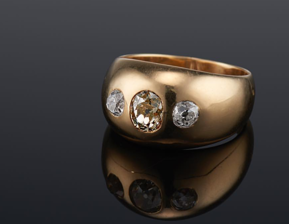
Gypsy ring at theoneilovenyc.com Photo: Little Wolf
-For a dressier statement piece, Art Deco rings with their geometric lines and different cuts of diamonds definitely fit the bill like this one here in platinum, diamonds and ruby accents.
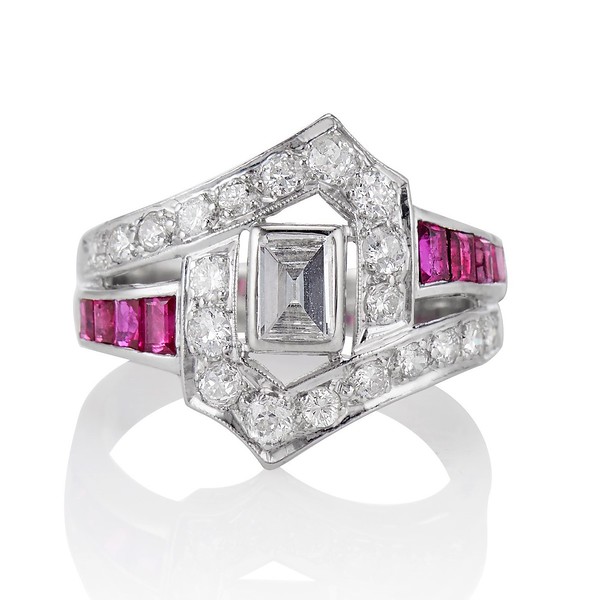
Jewels By Grace Art Deco Diamond and Ruby Ring
Brooches
I have long been a huge fan of brooches. Over the past few years, they have made a major comeback, most likely because modern women have figured out what the women of past decades knew. They can be worn year-round without having to worry about the length of a chain over a turtleneck or how to dress up the LBD. Brooches go with any outfit and can be worn with everything from a jean jacket to an evening gown. They can be even be placed in your hair with hidden bobby pins. How they look best: worn in multiples.

A group of Georgian and Victorian brooches in garnet, turquoise and gold at Lowther Antiques
Bracelets
-There are various styles of antique and vintage bracelets. In Victorian times, women followed the trends set by their stylish queen and wore wide black enameled bracelets on each wrist. The black enamel over gold was part of the dark and more somber jewelry that became so popular when Queen Victoria went into mourning after Prince Albert’s death. Pieces like these bracelets part of the look of mourning or memorial jewelry during this time. On a lighter note, wedding bracelets (two bangles which a women would wear on her wedding day and beyond) were also worn on both wrist and they were the reverse of the mourning styles: predominately gold with enamel tracing. These double bracelets often had sentimental floral designs which spoke to romance and new love.

Victorian mourning bangles at Keyamour

Pansy motif wedding bracelets at Keyamour. Pansy in French—pensee—means ‘think” so these bracelets have a meaning of think of me
-The wide cuffs were luckily also shown in silver which were engraved and featured buckles, corset motifs and the look of real French cuffs. Wonder Woman had nothing on the Victorians, particularly since the bracelets were fierce looking but lightweight enough to pile and stack on and still be able to move. If you can’t afford gold, then I would suggest definitely investing in the silver styles and moving into the golds.
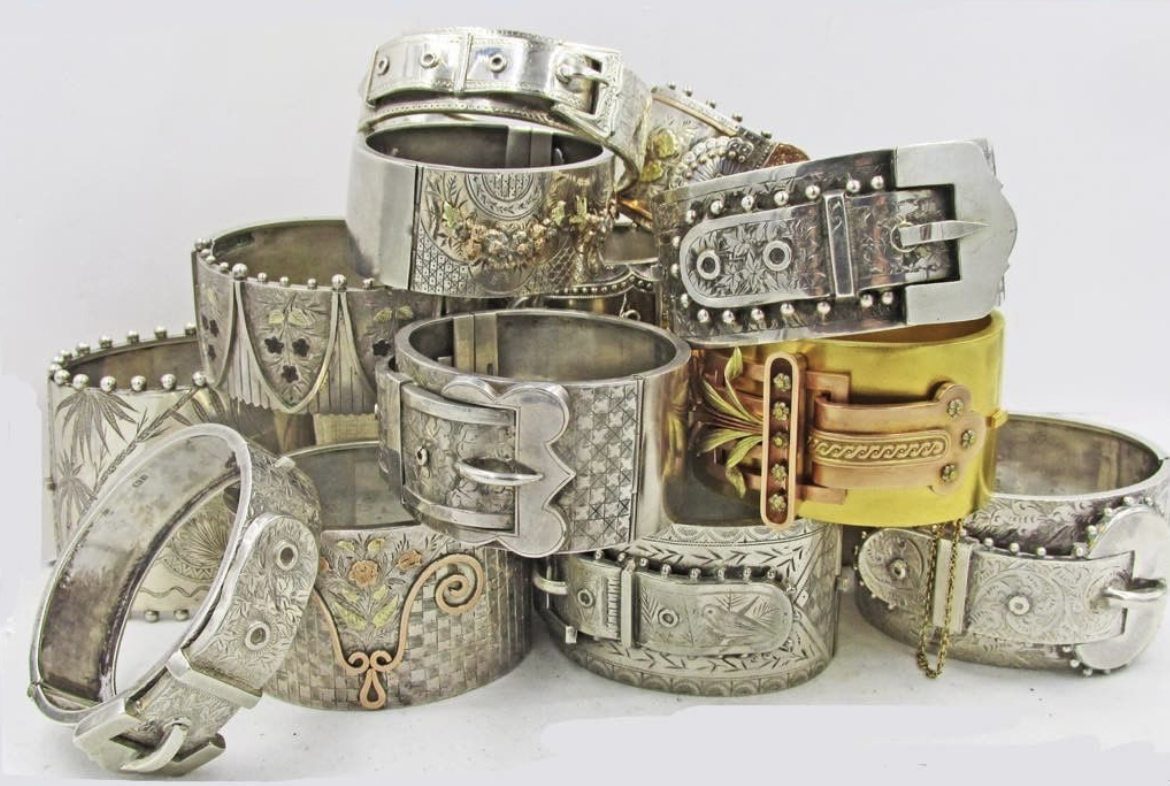
Silver Victorian bracelets at The Spare Room Antiques
-During Victorian times snake motifs held the meaning of eternal love due to Queen Victorian receiving one as an engagement ring. The trend evolved to all types of jewelry from bracelets to brooches to earrings This is a beauty of bracelet. It is is flexible with all blue enamel that is in excellent condition for its age, a moonstone and diamond head and ruby eyes. Keyamour features a range of snake bracelets in deep blue enamels, lighter blue enamels, turquoise and gold and a host of other styles from the Victorian into the Edwardian periods.

Snake bracelet at Keyamour
-Bracelets in the Edwardian/Belle Époque era became lighter and more flexible with the advent of platinum. We first saw platinum over 18K gold in the early parts of the period and then moved on to all platinum styles. The predominant looks were all white—diamonds and pearls in lacy openwork patterns that were dressier yet spread a welcome lightness across Europe after the heavier styles of the Victorians. Pieces took their inspiration from garland motifs and French embroideries.
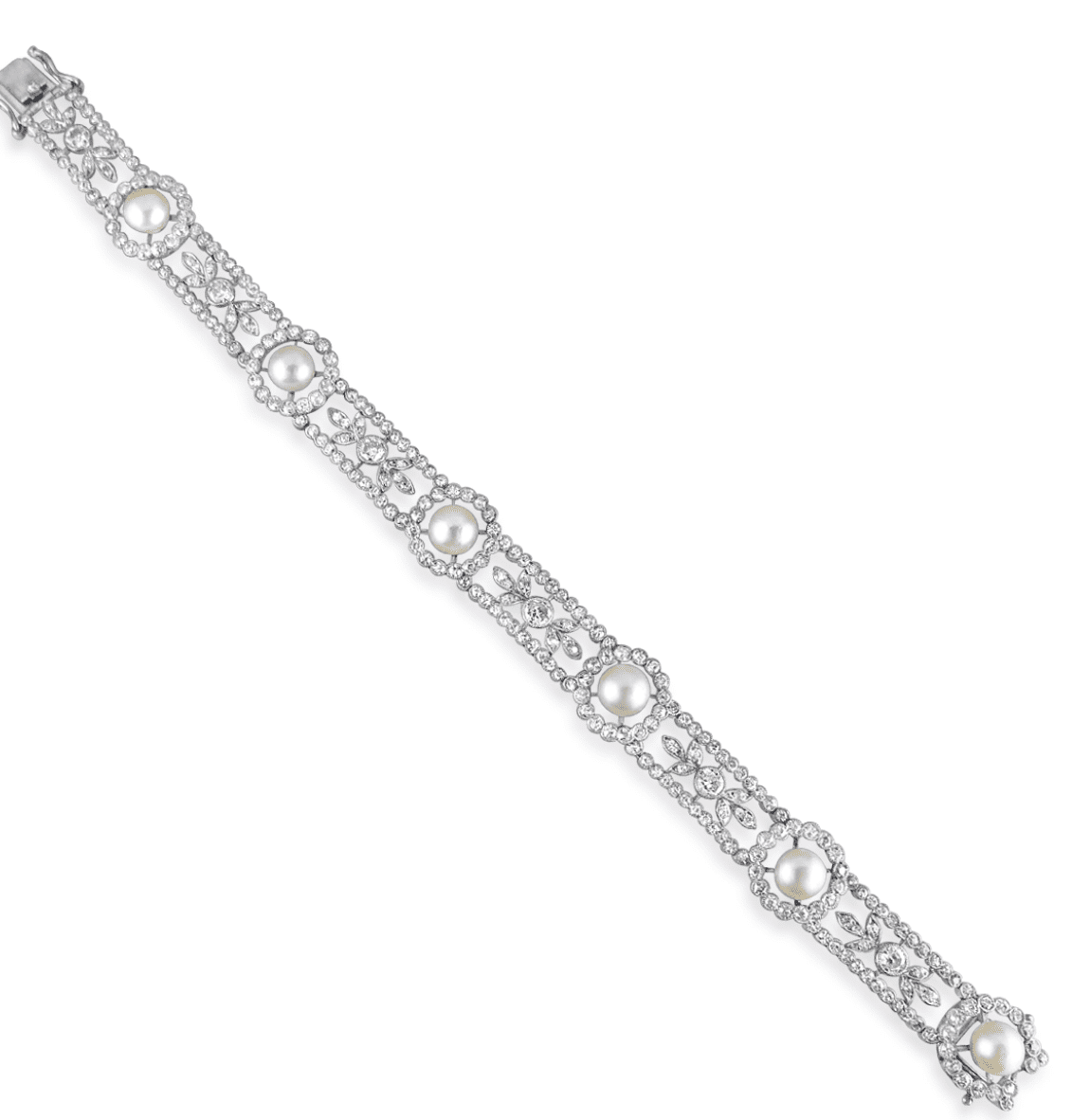
Edwardian/Belle Époque bracelet at Humphrey Butler
Pendants and Necklaces
-There is nothing like a Georgian or Victorian fob to give an antique chain character, particularly when the chasing, engraving and gold work is as intricate as the ones pictured here. . The underside of these fobs often featured hardstone with family crests or initials. Most collectible are those with sentimental and symbolic imagery. Like signet rings, many of these fobs were used as seals to sign important papers or indicate a person’s hobbies and professions.

Show here a group of gold Georgian fobs from The Spare Room Antiques cleverly placed on a chased ultra large key ring which could act as a split ring bracelet
-Sentimental jewelry was all the rage during the first part of Queen Victoria’s reign, known as the Romantic Period, which lasted until Prince Albert’s death. During this time, messages and motifs of passion and promises of love were continually present. And what better to represent affairs of the heart than…a heart! They were created as charms, pendants, lockets and padlocks.
- Enamel and dIamond heart at Humphrey Butler
- Garnet and gold antique padlock at The Spare Room Antiques
-Fringe diamond necklaces from the 1800s took on a few different proportions and were sometimes created in silver over gold with accent pearls. This version is all diamonds and is a perfectly proportion one which looks as current today as it did back in Victorian times. It is a style that has been revamped through the 20th century and modern designers continue to created contemporary renditions.
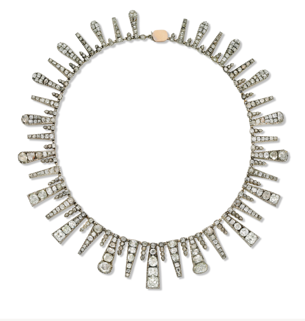
Fringe necklace at Simon Teakle
-Christine from Simon Teakle shows us how to mix different time periods and aesthetics, here she is wearing an amethyst necklace from the Victorian period and a Shakudo ultra long chain with a small Shakudo pendant. It’s ultra chic in its unexpected mix and offers a modern take on antique.
Shakudo pieces are extremely difficult to find. It is an ancient metal of typically 4–10% gold, 96–90% copper, which was first used in Japanese metalwork in ancient times. it produces tricolors of gold, reddish bronze and black. In jewelry this technique was brought back in the 19th century.

Amethyst necklace and Shakudo necklace at Simon Teakle.
-The combination of enamel, magical stones such as moonstone and naturalistic elements were part of the distinguishing factors of the Art Nouveau period. Some of the pieces were extremely over the top in their wearability although jaw dropping in their artistic expression. This necklace features elements of both—it’s extremely versatile and enchanting at the same time.

Art Nouveau enamel necklace at Humphrey Butler
-Ultra-long French enamel necklaces like this one are extremely rare. If you are a collector of rare pieces and can afford some of the higher ticket price tags, then this is one you should snap up for your collection.

French Turn of The Century Ultra Long Enamel Chain at Keyamour
–Another example of an ultra-long French chain is this filigree French 60 inch chain that is 18K gold and heavy but with the hand of silken lace when you touch it. I am lucky enough to have found one of these and its one of my go to pieces for all occasions from business meetings to dinners to more formal events. You can wear it long, wrapped twice or three times and you can also turn it into a lariat-style if you click the clasp into one of the rings on the filigree stations.
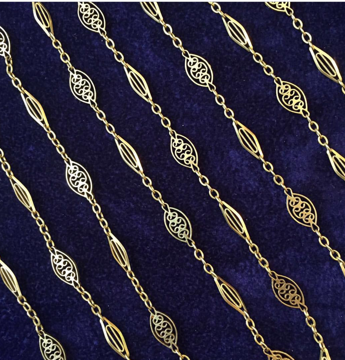
French ultra long filigree chain at Morelle Davidson
-Pretty and delicate, this Edwardian/Belle Époque platinum and diamond necklace is the perfect length for deep V-necks and nights out on the town. It’s indicative of the time period yet will dress up any LBD or work with any other color in your wardrobe. It has just enough sparkle to add a dressy piece to your jewelry collection while allowing you to be the one to shine.
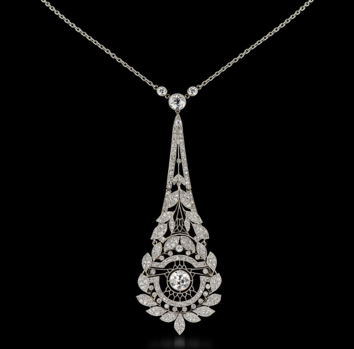
Edwardian/Belle Époque lavaliere at Spicer-Warin
-This is the new version of the solitaire that every woman who has passion for the character and history of old mine cut diamonds should own. It is simplicity at its best with a little bit of soul, delicate with a big personality. It is crafted from pieces that Mia Moross owner of theoneilovenyc.com finds and re-imagines into jewelry the modern woman wants to own. All diamonds are preserved in their original setting and then made into pendants adding modern chain. Ask about the different sizes that this diamond solitaire is offered in.
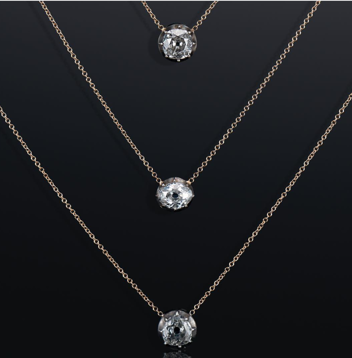
Mine cut solitaire at Theoneilovenyc.com
Earrings
-Girandole earrings can be heavy and long or lighter weight and more delicate. The style is one that contemporary designers are revisiting so why not invest in a pair that is authentic and will appreciate with time as well as give you pleasure now? These blue enamel and gold treasures are just the size and weight that can be worn by a number of different shaped faces, age ranges and complexions.
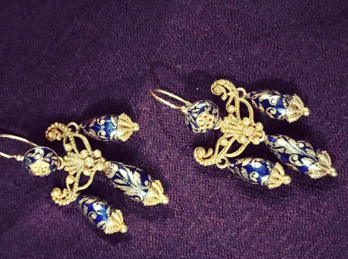
Enamel French mini girandole earrings st The Spare Room Antiques
-I am a true believer in earrings that you can wear in your daily life not just for special occasions. Therefore, even when I find a pair of all antique diamond pendant earrings. I tend to prefer them on the more pared-down side and smaller in size than the larger pendant earrings of the day (which were known as pendeloques). Here are a pair that caught my attention immediately:
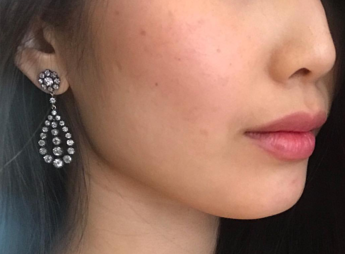
Antique diamond pendant earrings at Simon Teakle
-Elongated earrings with movement that are more linear that pendant earrings but still have swing and intricate design details aren’t always easy to find. But there were a few pairs worth noting and worth thinking about. These milky chalcedony pair from the Victorian era with the floral motifs wrapped around are dreamy and feminine without being to frilly or embellished. The sterling silver pair are harder to come by in a beautiful long earring that sways when you walk, adding a lift to you step and a smile to your face.
- Glorious Antique Jewelry Gold and Chalcedony earrings and Sterling Silver Victorian earrings
–Similar to the solitaire pendant, Mia Moross found a broken piece with Georgian garnets in their original settings and created this ultra wearable pair of hoop earrings that are in keeping with her preservation of the past while turning her pieces into present day jewelry.
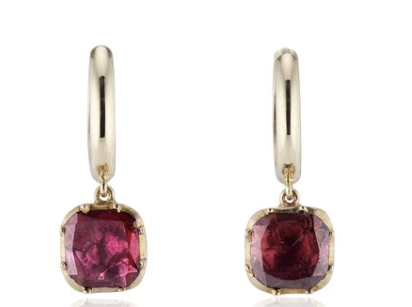
Re-imagined garnet earrings at theoneilovenyc.com
There you have it. Pieces found on our two tours through The New York Antique Jewelry and Watch Show, summer 2018. To give you a glimpse into how closely the groups were listening, I have also included one group shot and some shots of me trying on the more rare and hard to find pieces, memorial rings and Berlin Iron bracelets.
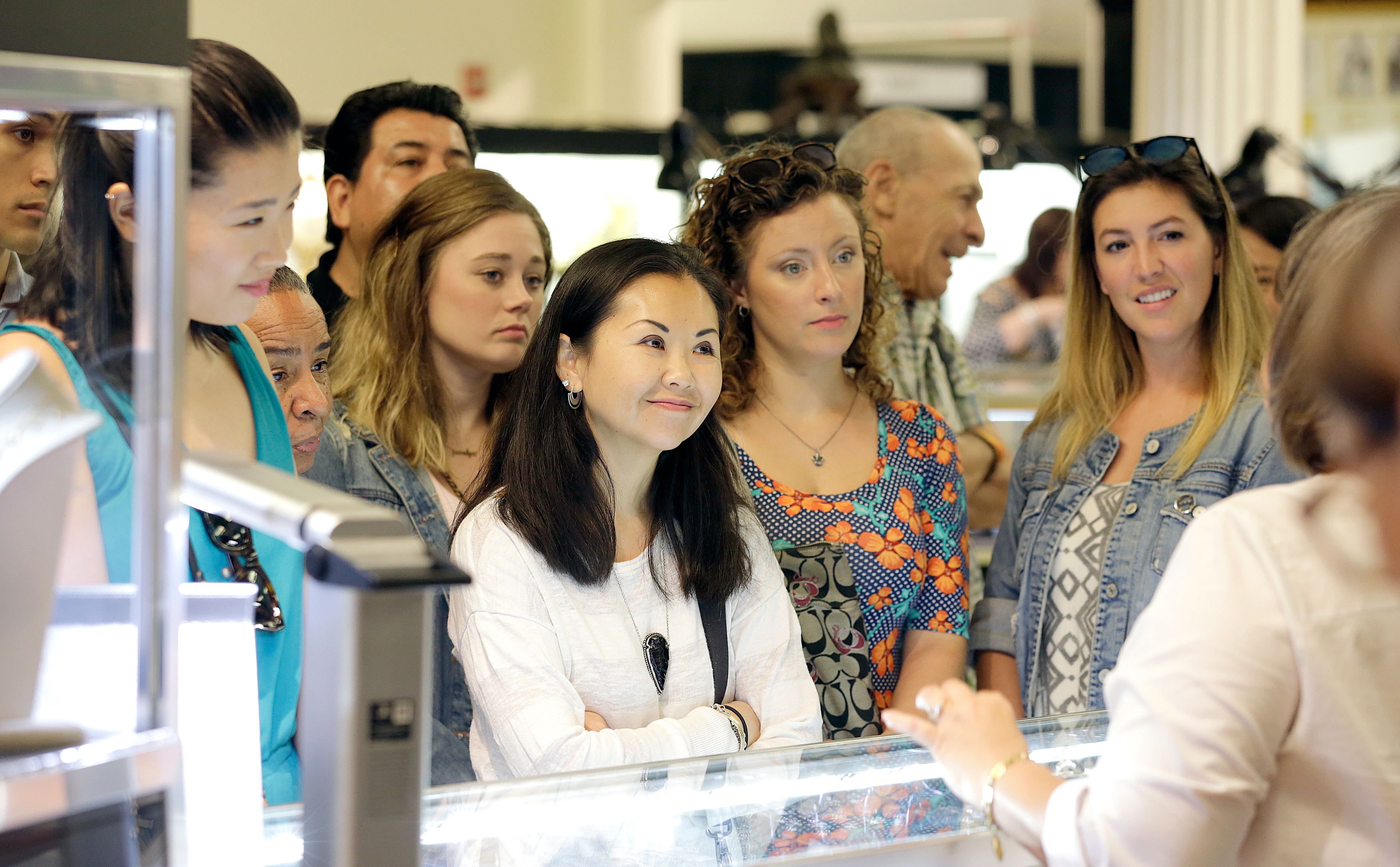
Some of the jewelry enthusiasts captured in my first tour group.
- Me-Trying on a Berlin Iron Bracelet
- And a memorial ring, both at Glorious Antique Jewelry
I am also trying on that incredible blue enamel snake bracelet which I wish I could have taken home with me and added to my collection, but alas, it had to go back to the dealer.
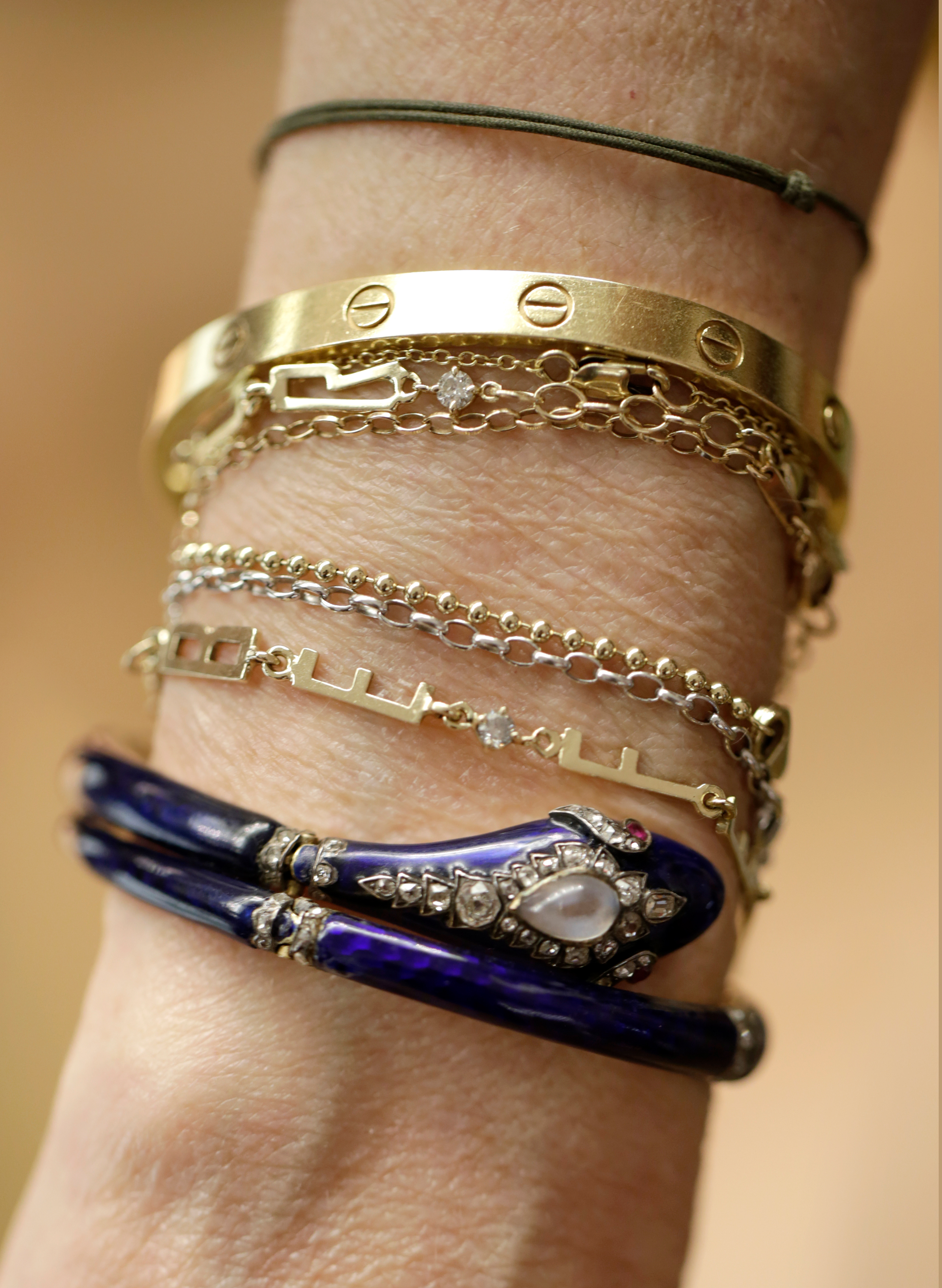
SIMILAR STORIES

